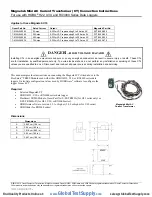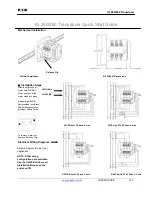
QRP-20
•
6
start at the proverbial "30 db. over S-9" and work itself down to S-1 for reasons
that will become obvious.
S9+10 db. 1000 watts output
S9 100 watts output
S8 25 watts output
S7 6.25 watts output
S6 1.56 watts output
S5 .39 watts output
We can see that it becomes easy to play games with such numbers. For
example, an RST of 439 is a legitimate report which permits reasonably
effective communication. But, do we believe that the transmitting station
illustrated above could really produce a 439 signal by running .0013 watt? If we
say "probably not", we also ask why not, and then we would get the seminars
about perfect antenna matching, transmission line losses, and so forth.
Under good propagation conditions, SSB signal reports of "20 over S-9" and
more can be given without even needing 1000 watts or a beam antenna.
Assuming the "+20" is an accurate report, consider this example of power
reduction over the same path:
S9+20db. 1000 watts
S9+10db. 100 watts
S9 10 watts
S8 2.5 watts
S7 .625 watts
S6 .156 watt
S5 .039 watt
S4 .0087 watt!
Under reasonably good band conditions, particularly at 10 or 14 MHz and on
up, the above correlation of signal reports to power output becomes realistic.
"S9+20" is what amplifier users expect to give and receive to justify their
investment and power consumption. Most commercial transceivers have typical
output in the 60-200 watt range, and S8-9 reports are taken for granted.
Actually, 15-25 watts is a far more practical operating power than most
amateurs and equipment vendors realize today...and the thousands of QRP
enthusiasts will confirm that getting a solid 579 running 3-4 watts is no big deal.
If all the above theoretical signal reports are based on both the transmitting and
receiving
stations using simple dipole antennas, we can also see that the use of
some 10db gain antenna such as a beam or quad by either station could move
the S7 for .625 watt up to S8, and that a similar antenna used at the other
station could give the under 1 watt signal a further boost over S9!
Summary of Contents for QRP20
Page 10: ...QRP 20 10...
Page 11: ...QRP 20 11 QRP20 PARTS LAYOUT DIAGRAM...
Page 22: ...QRP 20 22...







































